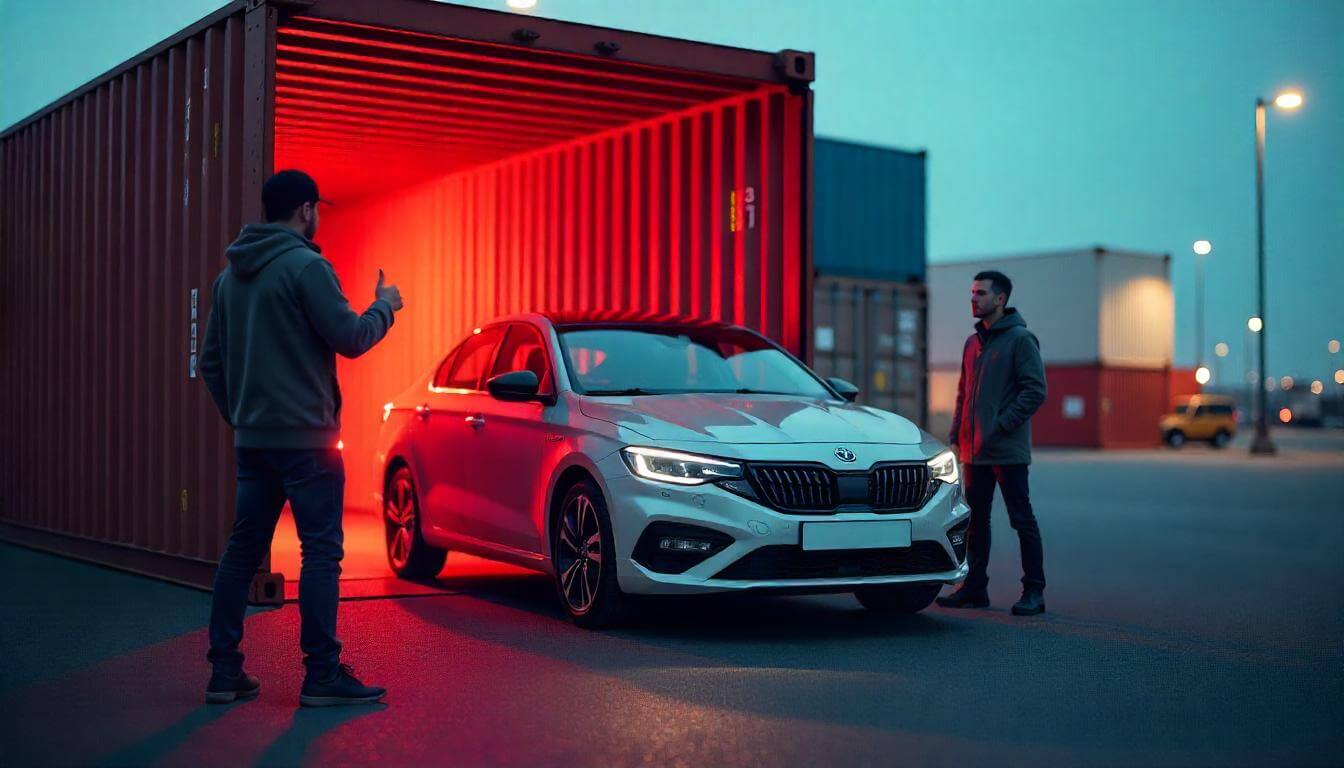Parallel importation of cars, the pros and cons of which are being actively discussed in 2025, has become an alternative to official deliveries for Russians after the withdrawal of many car brands from the market. This scheme allows importing cars without the consent of manufacturers, opening access to models that are not available at official dealers. However, buying such cars comes with risks, from lack of factory warranty to difficulties with maintenance. In this article, I will look at what parallel importation is, its advantages and disadvantages, and give recommendations so that you can make an informed decision.
What is parallel importation of cars
Parallel importation is the importation of original goods, including cars, into Russia without the authorisation of the brand right holder. This scheme was legalised in March 2022 in response to sanctions and the withdrawal of foreign carmakers [web:5]. It allows dealers and private companies to buy cars in other countries and sell them in Russia, bypassing official channels.
How the scheme works
Vehicles are imported through EAEU countries (Kazakhstan, Armenia) or other regions such as China and the UAE. Legal entities issue a Single Vehicle Evaluation Report (SVER) through NAMI, pay customs duties and utilisation fees [web:0]. From 1 April 2024, the rules have become stricter: import through the EAEU now requires additional VAT and excise duty, which has increased the price of 20-30% [web:11][web:24]. The cars are also being equipped with the ERA-GLONASS system. As a result, the process has become more transparent, but more expensive.
Which brands are available
The Ministry of Industry and Trade regularly updates the list of brands allowed for parallel imports, including Audi, BMW, Mercedes-Benz, Toyota, Volkswagen and others [web:12]. Chinese brands such as Geely are imported through official representative offices, so they are not subject to parallel imports [web:1]. For example, Volkswagen Tayron or Toyota Land Cruiser Prado 250 are popular among imported models [web:12]. Thus, the choice is wide, but limited by the list of the Ministry of Industry and Trade.
Pros of buying a car from parallel imports
Parallel import auto pluses minuses of which depend on the situation, offers several advantages that make it attractive to Russian buyers.
Access to rare models
Cars that were never officially sold or left the market after 2022 enter Russia via parallel imports. For example, Volkswagen Multivan T7 or Audi Q7 restyled in 2024 are available only in this way [web:6][web:12]. You can also find models in unique packages, such as the BMW X3 with rare engines. As a result, buyers get more variety.
Competitive prices for the premium segment
In some cases, premium cars turn out to be cheaper than in official deliveries. For example, a Mercedes-Benz GLS imported from the UAE may cost 10-15% less due to the difference in taxes and the lack of distributor mark-up [web:10]. However, this does not apply to mass-market models such as the Toyota Corolla, where the final price after fees is comparable to the market price [web:3]. As a result, a benefit is possible for luxury cars.
An alternative to Chinese brands
Many Russians do not want to limit their choice to Chinese brands that dominate the market in 2025. Parallel imports give an opportunity to buy European or Japanese cars, such as Skoda Kodiaq or Hyundai Tucson, with familiar design and build quality [web:12]. It is also an option for those looking for reliable brands that are not officially represented. Thus, the scheme widens the choice.
Minuses of parallel importation
Despite the pros, the parallel import auto pros pros cons of which must be weighed, have serious disadvantages that can put buyers off.
No factory warranty
One of the main problems is the lack of a manufacturer's warranty. It does not apply to cars imported through parallel imports, as the brands do not control the supply [web:2]. Some dealers offer their own 1-2 year warranty, sometimes through insurance companies, but its terms are limited [web:2][web:6]. For example, repairs to complex systems such as Tesla's autopilot may not be available. As a result, the risks are borne by the buyer.
Difficulties with maintenance and spare parts
Cars from parallel imports are often not adapted for Russia. For example, cars from the UAE may not have heated seats or a reinforced battery for cold climates [web:4]. Also, access to spare parts and service programmes is limited because manufacturers block catalogues for dealers in Russia [web:3]. According to Rosgosstrakh, servicing according to factory regulations is not possible for all models [web:7]. In addition, repairs can be expensive - replacement of a node in a BMW X3 will cost 100,000-300,000 rubles. Thus, operation requires additional costs.
Fraud risks and legal issues
A long supply chain increases the likelihood of fraud. Unscrupulous sellers may underestimate the value during customs clearance or forge documents, which can lead to confiscation of the car [web:0]. There are also cases of selling cars with incorrect SBCTS or without ERA-GLONASS, which complicates registration with the State Automobile Inspection Service [web:2]. Avtokod estimates that up to 10% of transactions with parallel imports involve violations [web:7]. As a result, the purchase requires a thorough check.
High price after fees
From 2024, the recycling fee has increased to 667,400 rubles for new cars, and import through the EAEU requires additional VAT and excise duty [web:11]. For example, a Chinese-built Volkswagen Bora costs from 2.5 million rubles, which is 1 million more expensive than a similar Skoda Octavia two years ago [web:2]. Customs duties and certification add up to 600,000 rubles to the price of budget models [web:3]. As a result, savings on mass-market cars are minimal or non-existent.
Practical advice before buying
To minimise the risks of buying a car from parallel imports, follow these guidelines.
Check the seller and documents
Choose reputable dealers such as large showrooms rather than private hauliers. Request ZOETS, PTS and proof of payment of duties. For example, check the VIN through services like Autocode to rule out legal restrictions [web:7]. Also make sure the car is equipped with ERA-GLONASS. In summary, a thorough check will reduce the risk of fraud.
Ask about the terms of the warranty
Before you buy, find out who provides the warranty - dealer or insurance company - and what parts it covers. For example, some dealerships, such as Car-Spot, offer a 12-month warranty, but not for electronics [web:17][web:22]. Ask for a written contract with clear terms and conditions. In addition, check if there are service centres for your model in the area. This way, you will avoid surprises in the event of a breakdown.
Evaluate adaptation and maintenance
Make sure that the car is suitable for Russian conditions. For example, check for a winter package and compatibility with local fuel standards [web:4]. Also, check whether there are spare parts for the model in Russia - for Toyota it is easier than for Tesla [web:10]. According to Rosgosstrakh, the ability to issue a KASKO is an indicator of service availability [web:7]. As a result, adaptation affects the ease of use.
Compare prices with alternatives
Before buying, compare the cost with Chinese brands or used cars. For example, a Hyundai Tucson from parallel imports for 3 million rubles competes with a new Geely Monjaro for the same price, but with a full warranty [web:12]. Also consider insurance and maintenance costs. In the end, calculating the full cost will help you make a decision.
Which models are popular in 2025
Parallel import auto pluses minuses of which depend on the model, offers some interesting options. Here are three popular cars imported into Russia in 2025.
Audi Q7: the luxury crossover vehicle
Audi Q7 (restyled 2024) with 3.0 TFSI engines and a price starting from 11.3 million rubles is one of the leaders of parallel imports [web:12]. Spacious interior, all-wheel drive and premium trim attract families. However, spare parts are expensive and the warranty is limited by the dealer. As a result, it is a choice for those who are ready to pay for status.
Toyota Land Cruiser Prado 250: a reliable off-roader
Prado 250 with a price from 6 million roubles is valued for reliability and passability [web:12]. The car is often imported from the UAE, but may not have a heated steering wheel. Spare parts are available, and repair is easier than in European brands. As a result, the Prado is a universal option for the regions.
Volkswagen Tayron: a budget crossover
The Chinese-built Tayron costs about 3 million roubles and competes with the LADA Vesta [web:12]. Its compact size and economical engine are suitable for the city. However, service for VW is limited due to the brand's withdrawal. In the end, it is an affordable choice with moderate risks.
Situation on the Russian market
The Russian market in 2025 is still dependent on parallel imports, but their share is declining due to rising prices.
Share of parallel imports
According to Open Auto, parallel imports accounted for 13.7% of new cars in 2023, but the share falls to 10% in 2025 due to new levies [web:7]. Chinese brands such as Chery take up to 60% of the market, reducing the demand for imports [web:12]. Also, local production, such as LADA, competes with imported models. As a result, the scheme remains niche.
Outlook to 2030
By 2030, parallel imports may decrease if official supplies return or localisation increases. The Ministry of Industry and Trade allows the scheme to be cancelled if the market stabilises [web:18]. However, for now it is the only way to buy new foreign cars such as BMW or Skoda [web:12]. In addition, the development of logistics through China may simplify imports. Thus, the scheme will remain relevant in the coming years.
Bottom line: parallel car import pros pros cons 2025
Parallel import of cars pluses minuses of which we have analysed, gives a chance to buy rare models such as Audi Q7 or Toyota Prado, but involves risks: without factory warranty, with expensive maintenance and high price after fees. Check documents, check warranty terms and compare with Chinese brands to avoid overpaying. If you're willing to go to the trouble for the sake of a unique machine, parallel imports are your option. In the end, the decision depends on your budget and willingness to take risks.

 Whether it is worth buying a car from parallel import: pros and cons">
Whether it is worth buying a car from parallel import: pros and cons">
